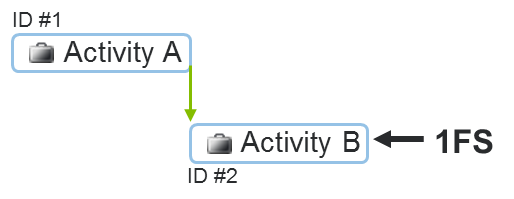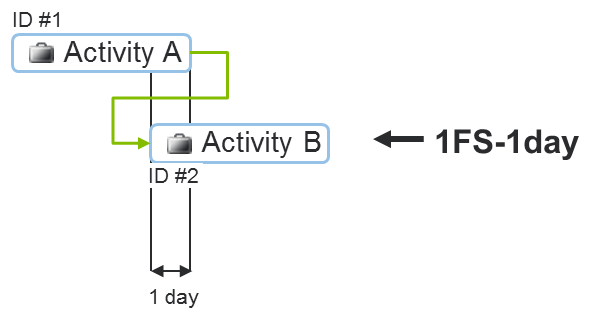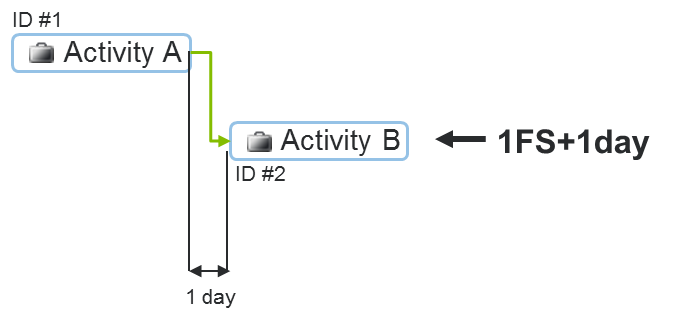Predecessor Relationships
You can define and edit predecessors when you create or edit an activity.
A predecessor is an activity that must start or finish before another activity can start or finish. Each predecessor is linked to the activity by a specific type of dependency. There are four kinds of dependencies:
|
Task Dependency
|
Description
|
|---|---|
|
Finish-to-Start (FS)
|
The dependent activity cannot begin until the activity that it depends on is complete.
For example, an activity, summary activity, or subplan in a plan is a predecessor with an FS type of dependency on a successor activity. The state of the successor activity moves to In Process state only after all the predecessor activities are complete or cancelled.
|
|
Start-to-Start (SS)
|
The dependent activity can begin anytime after the activity that it depends on begins.
The SS relationship does not require that both activities begin simultaneously.
|
|
Finish-to-Finish (FF)
|
The dependent activity can be completed anytime after the activity that it depends on is completed.
The FF relationship does not require that both activities be completed simultaneously.
|
|
Start-to-Finish (SF)
|
The dependent activity can be completed anytime after the activity that it depends on begins.
The SF relationship does not require that the dependent activity be completed concurrent with the beginning of the activity on which it depends.
|
For information on how activity date constraints affect precedence relationships, see Start Dates and Precedence Relationships.
Leads and Lags
Lead and lag is an overlap or delay between two tasks with a precedence relationship:
• Lead time is an overlap within a precedence relationship. You enter lead time as a negative value.
For example, if you have a Finish-to-Finish precedence relationship and want to specify that the dependent task can actually be completed 3 days before its predecessor completes, you would enter FF-3day.
• Lag time is a delay between two tasks in a precedence relationship. You enter lag time as a positive value.
For example, if you have a Finish-to-Finish precedence relationship and want to specify that the dependent task cannot be completed until 3 days after its predecessor completes, you would enter FF+3day.
Specifying Precedence, Lead, and Lag
You define predecessor relationships when creating or editing the dependent task. Each predecessor task is represented by its task ID number followed by a dependency type and, optionally, the lead or lag time. The task ID number is listed in the ID column of the Schedule table.
|
|
Do not use spaces when entering a precedence relationship with a lead or lag.
|
For example, you create Activity A (ID number 1) and Activity B (ID number 2). You want to specify that Activity B cannot start until Activity A is completed. To do this, edit Activity B and enter the following information into the Predecessors field:
1FS

Activity B cannot start until Activity A completes.
If you want to allow Activity B to start one day before Activity A completes, you would specify a lead:
1FS-1day

If you want Activity B to start one day after Activity A completes, you would specify a lag:
1FS+1day
